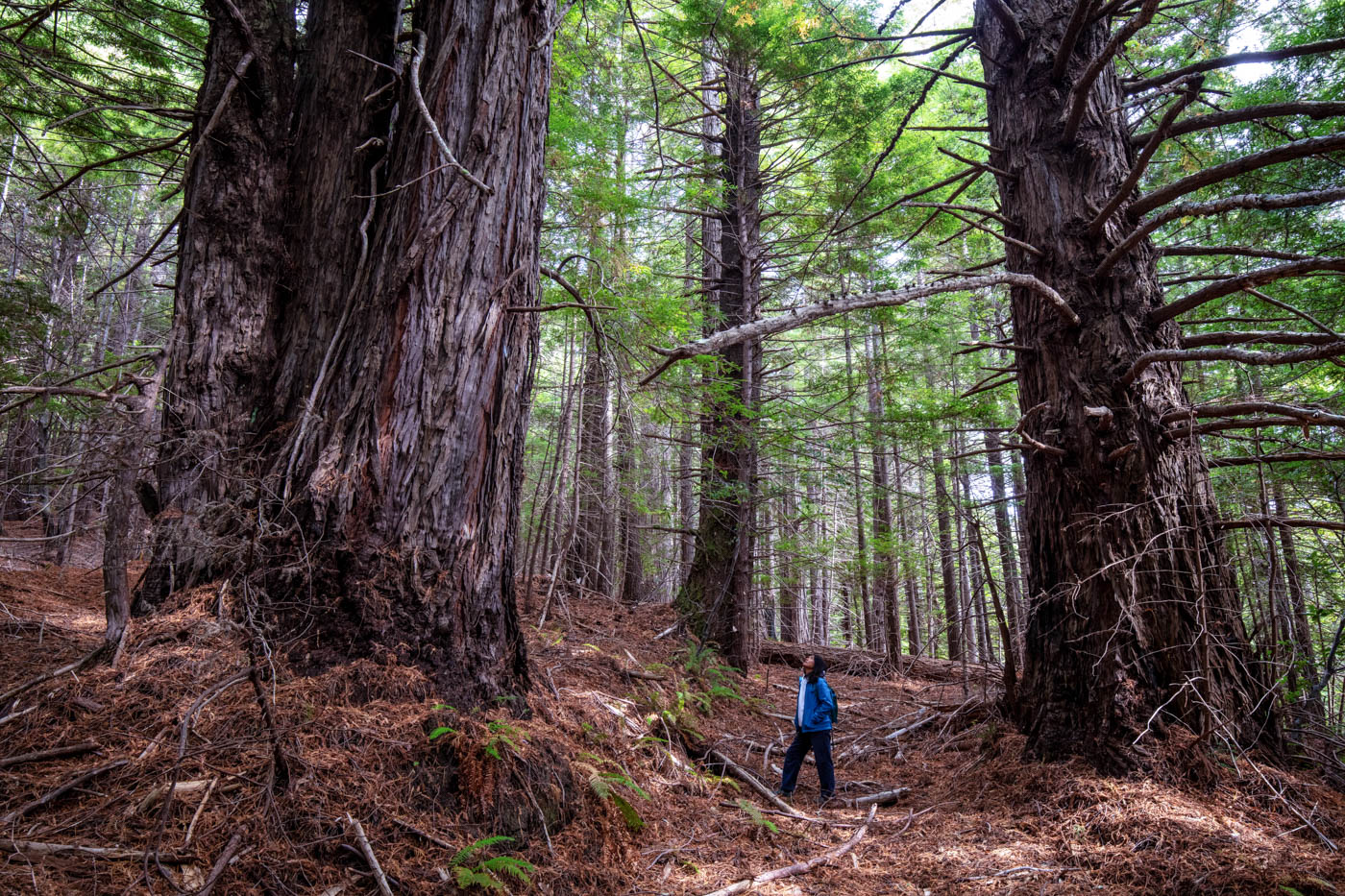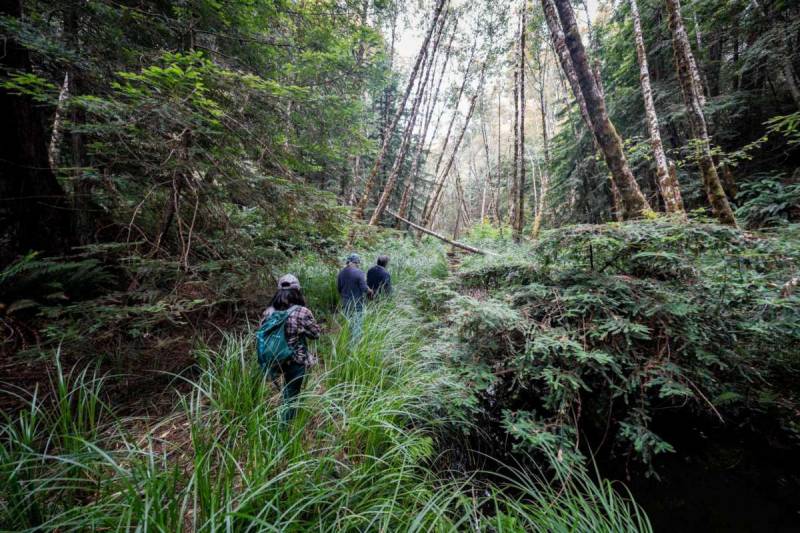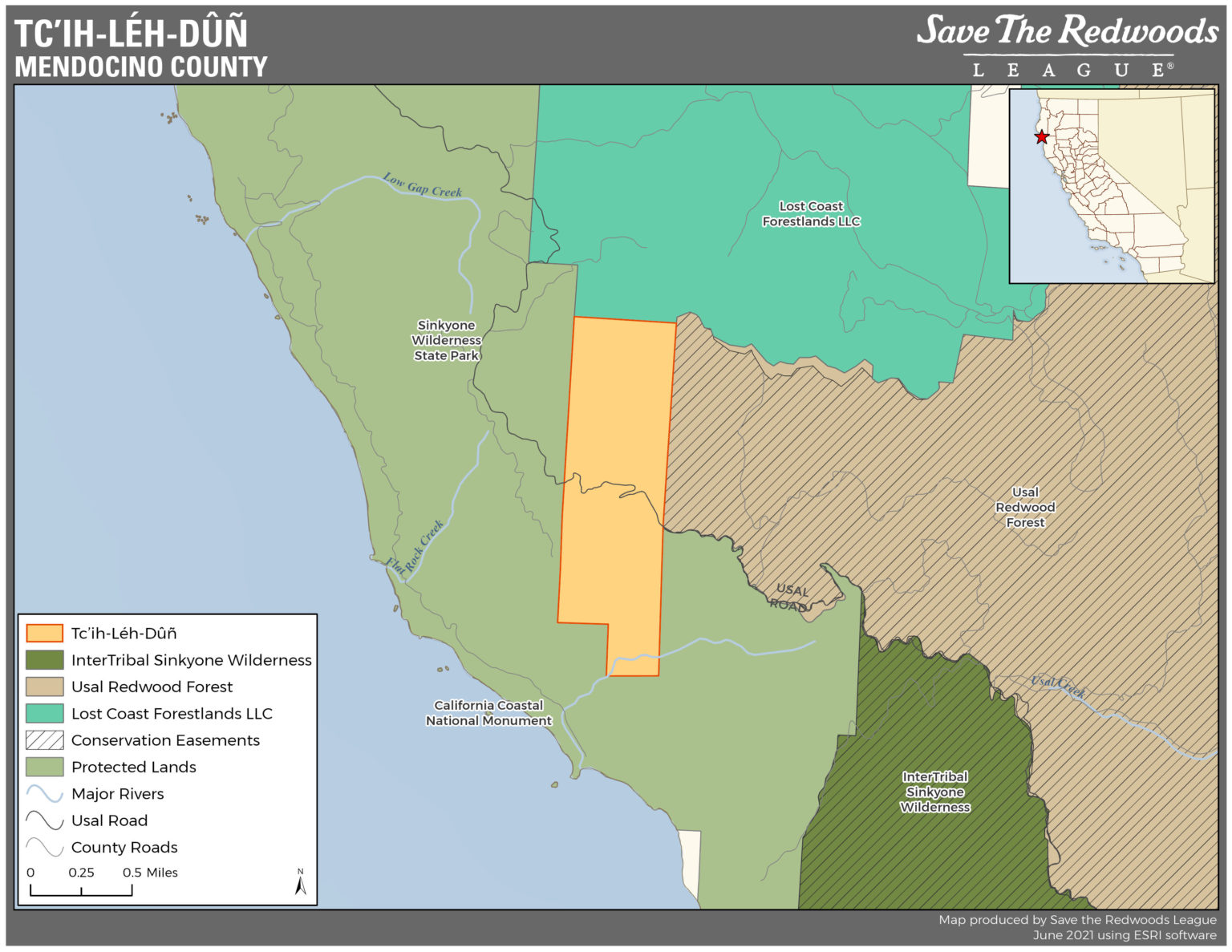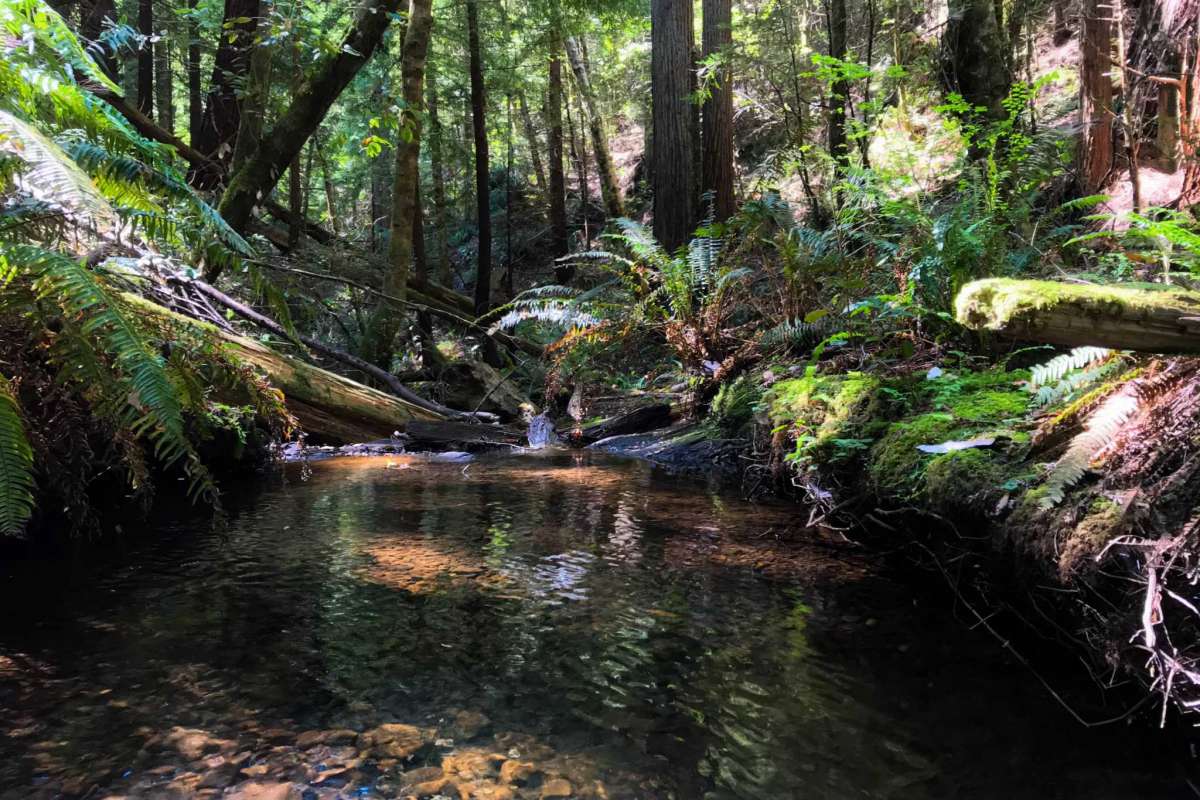A conservation group representing Northern California tribes is reclaiming a pristine swath of redwood forest along the state’s rugged coastline in northern Mendocino County, part of an ecologically rich region that Indigenous people inhabited for thousands of years before white settlers violently displaced them.
The San Francisco-based Save the Redwoods League bought the remote 523-acre plot — part of the largely undeveloped Lost Coast — and announced this week it had transferred ownership to the InterTribal Sinkyone Wilderness Council, or Sinkyone Council, which includes members of 10 federally recognized tribes in Mendocino and Lake counties.
The Sinkyone call the land Tc’ih-Léh-Dûñ (pronounced “tsih-ih-LEY-duhn”), meaning “Fish Run Place.” Located about 170 miles north of San Francisco in the traditional territory of the Sinkyone people, it includes some 200 acres of ancient towering old-growth redwood trees miraculously spared by loggers, along with a dense canopy of second-growth groves, Douglas firs, tanoaks and madrones. The forest is a habitat for a number of threatened species, including the marbled murrelet, northern spotted owl and yellow-legged frog. Anderson Creek, a winding tributary of the South Fork Eel River, cuts through the property, supporting coho salmon and steelhead trout.

“You have a lot of happy Indians up this way,” said Priscilla Hunter, chairwoman of the Sinkyone Council and a tribal citizen of the Coyote Valley Band of Pomo Indians. “It’s not often that you get land donated back to the Indians. You know, they’re always taking it.”
Hunter, a tribal elder who turns 75 next month, said she has only seen pictures of the remote property, which is at least a four-hour drive north from her home in Redwood Valley, but hopes to visit soon.
“It’s a gift — a real blessing to our tribes,” she said. “Our relatives and our ancestors are happy and can be at peace, because this is where our ancestors were forced off their land and had to run away from either being killed or taken away. I believe that their spirits and our spirits are connected together today in a happy time.”



